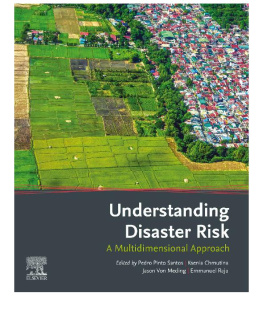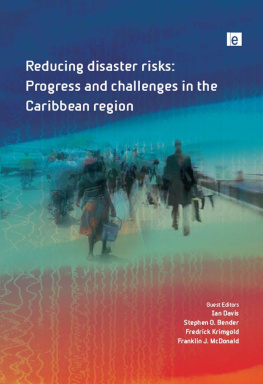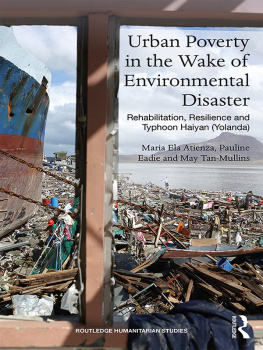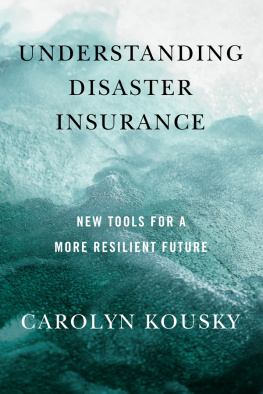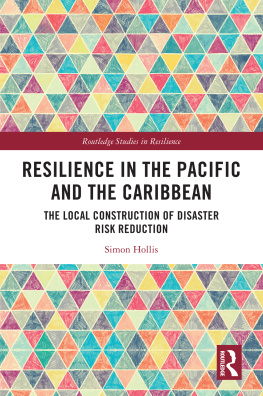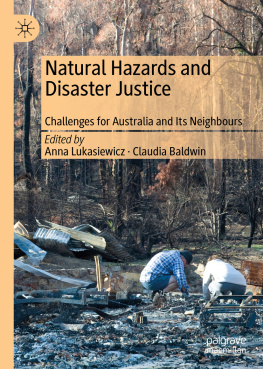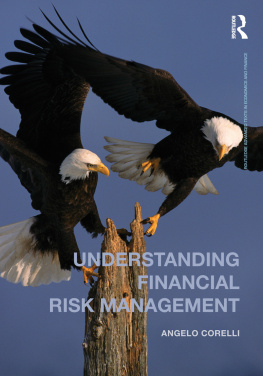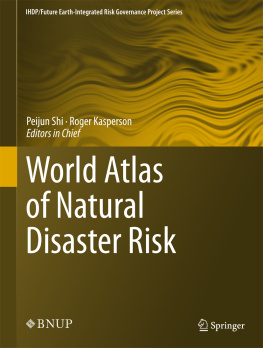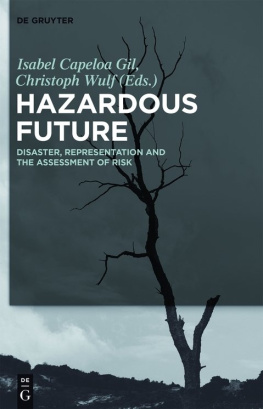The Anthropocene emphasizes an epoch of increased human impact on our planet. It is filled with uncertainty and complexity and asks for a transformative and interdisciplinary response. The objective of this study is to bridge the gap between disciplines working on resilience and draw lessons for improved governance of vulnerable communities. We use a systematic literature review to examine how the Anthropocene and resilience are conceptualized in the fields of human geography, futures studies, and systemic design. In human geography, the focus is on increasing cultural understanding and exploring how explanations coexist in complex ways within and across cultures. The futures field uses the concept as an opportunity to push for sustainability transformations, by inviting communities to futures workshops where they can develop scenarios rooted in their own practices. The field of systemic design emphasizes the need for systemic solutions to build new relations among territorial entities, visualize hidden potentialities, and boost proactive collaboration among local actors. These disciplinary insights show that, although they all hold different perspectives, combining them brings insightful lessons for resilience thinking. We conclude that the Anthropocene needs transformative resilience that combines knowledge from different scientific disciplines with local knowledge and experiences, in a transdisciplinary way.
Keywords
Anthropocene; Adaptive capacity; Transdisciplinarity; Multilevel governance; Resilience
Chapter outline
- 0.1.1
- 0.1.2
- 0.1.3
- 0.1.4
- 0.1.5
0.1.1: Introduction
High anthropogenic pressures on the earth system are exceeding the planetary boundaries on various scales. We are hitting the planetary ceiling: research shows that if humanity continues living the way it is doing, human well-being is at risk (), in which humans are the dominating force that hold the future in their hands.
The main complicating factors to living in the Anthropocene are that all of its issues are interconnected and that there is a high level of uncertainty, which demands planetary stewardship: an alteration of the relationship between people and planet (, father of modern resilience thinking, highlights that being resilient means having strategies and policies in place to deal with the unknown, which is a promising answer to the Anthropocenes main complicating factors.
Resilience thinking emerged in the 1970s from two different traditions: child psychology and ecosystem ecology. It developed into research streams like community resilience, climate resilience, disaster resilience, and development resilience. describe three forms of resilience: (1) Persistence , or bouncing back, which includes continual change and adaptation, but remaining on the same pathways; (2) Adaptability , which is about innovation and change, but also remaining on the same pathways; and (3) Transformability , which is about shifting pathways. Where disaster resilience was more about bouncing back and climate resilience was about adapting to change, the new resilience thinking is about transformation: a reconfiguration of systems, values, and beliefs.
An important component of resilience thinking is the features and dynamics of complex systems. Research () has provided seven building blocks for applying resilience thinking in order to increase the capacity to deal with unexpected change in complex social-ecological systems. These building blocks are: (1) maintaining diversity and redundancy; (2) managing connectivity; (3) managing slow variables and feedback; (4) treating social-ecological systems as complex systems; (5) encouraging learning; (6) broadening participation; and (7) polycentric governance systems.
This chapter looks at the potential of resilience thinking for addressing the challenges of the Anthropocene by outlining and synthesizing lessons learned in three different academic disciplines: human geography, futures studies, and design studies. How can we combine the insights of these different disciplines and rethink the concept of resilience outside of the disciplinary box? By looking at resilience thinking as a dynamic concept, we bring a transdisciplinary and holistic approach for resilience in the Anthropocene and show how this can be applied in practice to decision-making processes. The next section of the chapter outlines the methodology for the multidisciplinary literature review. The third section gives an overview of the results for each of the three disciplines. The fourth section discusses these findings and their relevance for the challenges of the Anthropocene, after which the chapter closes with a conclusion.
0.1.2: Methodology
When discussing a methodology for research that connects the knowledge contained in multiple disciplines, it is of importance to distinguish between three approaches to research: (1) multidisciplinary research; (2) interdisciplinary research; and (3) transdisciplinary research. According to , both multidisciplinary and interdisciplinary research are still based on disciplinary thinking. However, where multidisciplinary research is based on the juxtaposition of different disciplines, interdisciplinary research constructs a common model for the disciplines involved. Transdisciplinary research, on the other hand, goes beyond disciplinary thinking and its objective is to preserve the different realities and to confront them.(2004, p. 434). In the case of this chapter, our aim is to connect the academic disciplines of futures studies, human geography, and systemic design in a way that goes beyond drawing on the three disciplines separately. This raises the need to develop an interdisciplinary approach.
To start this analysis, it is crucial to first take stock of the various ways in which the three disciplines define resilience. To get a concise but good overview, the first step in our methodology is a quite straightforward literature review. This literature review consists of filtering the 10 most cited articles in the three fields that mention resilience as a core concept. We do this by focusing on two of the most prominent literature sources across all academic disciplines: Scopus and Web of Science. We used the search terms futures studies AND resilience; human geography AND resilience; systemic design AND resilience. While this may seem like a rather straightforward review process, previously executed by a range of authors in all three fields (REFS), the first interdisciplinary hurdles show up here. While human geography is an established field with its own category in the search engines, futures studies are rather less so, and span disciplines. Therefore, the futures studies literature was further filtered by searching for social science and manually filtering out papers that were far outside the scope of this current chapter, such as is in the field of healthcare where resilience is a popular term also but used with a different meaning (e.g., recovering after disease). For systemic design, the search terms were modified slightly to narrow down the results: design theory * resilience * systems theory. The results were filtered by amount of citations and the top 10 papers were scanned for their definition of resilience.
For each of the disciplines a brief synthesis of the definitions within the discipline is made, outlining the main points of interest and the general way the discipline talks about resilience. This taking-stock of the various disciplines serves as input for the discussion section, in which we look for differences, similarities, and a way to synthesize the knowledge from the three disciplines. A literature review such as this one can always be more extensive, but due to time limitations, we have chosen to focus on the 10 most cited articles to get a general overview and test this interdisciplinary approach in order to draw lessons for resilience in the Anthropocenethe main aim of this chapter.

